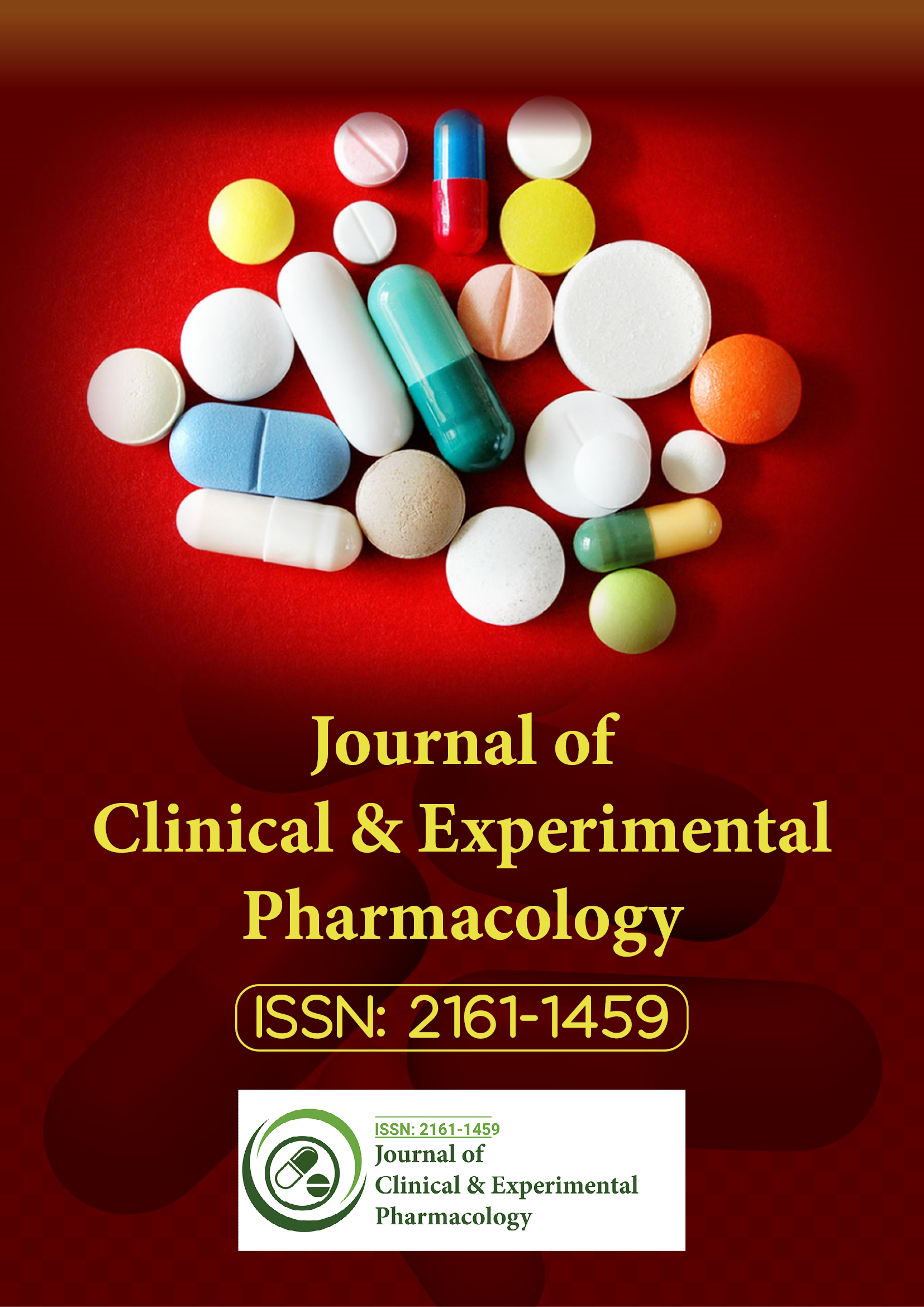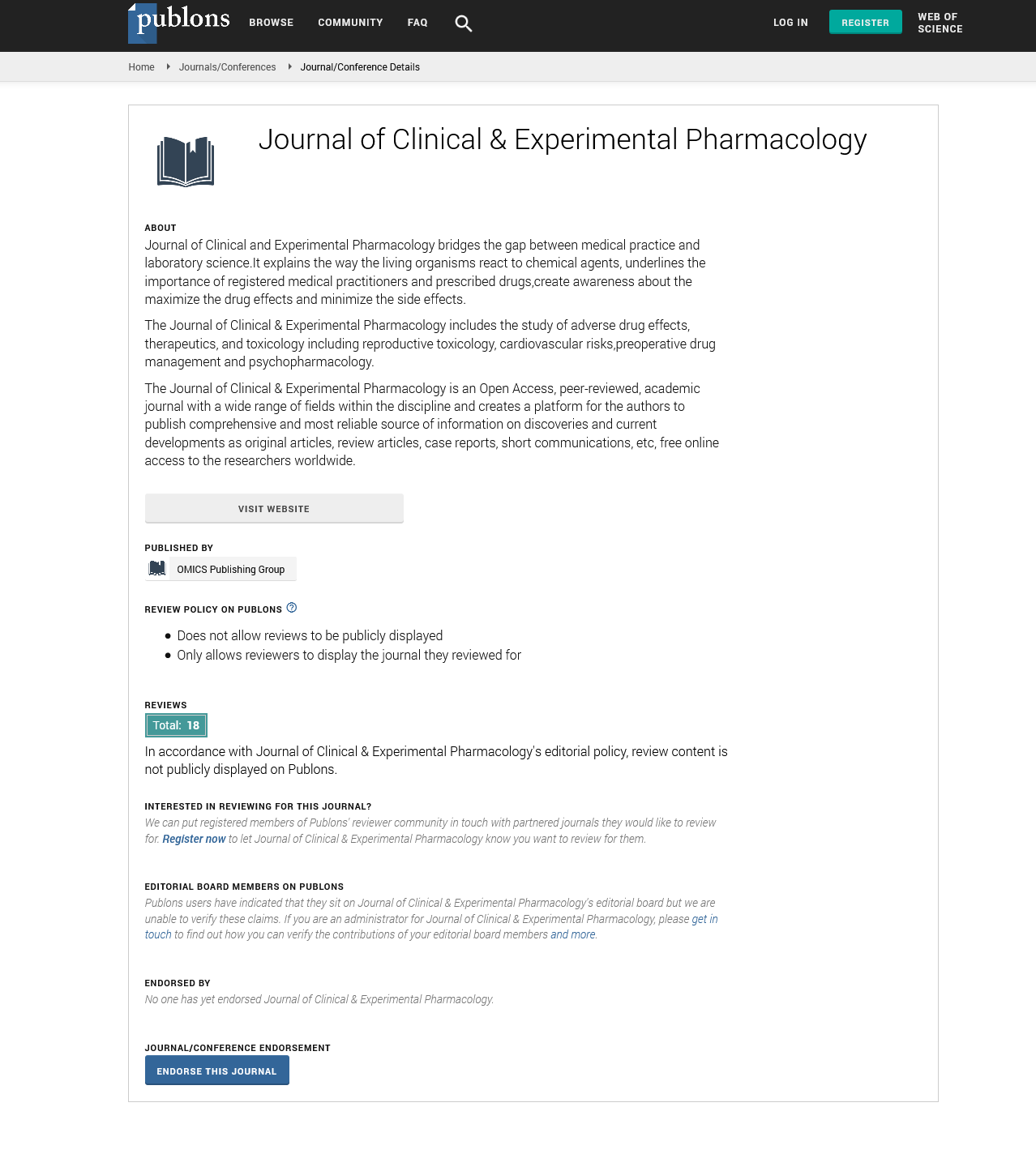Indexed In
- Open J Gate
- Genamics JournalSeek
- China National Knowledge Infrastructure (CNKI)
- Ulrich's Periodicals Directory
- RefSeek
- Hamdard University
- EBSCO A-Z
- OCLC- WorldCat
- Publons
- Google Scholar
Useful Links
Share This Page
Journal Flyer

Open Access Journals
- Agri and Aquaculture
- Biochemistry
- Bioinformatics & Systems Biology
- Business & Management
- Chemistry
- Clinical Sciences
- Engineering
- Food & Nutrition
- General Science
- Genetics & Molecular Biology
- Immunology & Microbiology
- Medical Sciences
- Neuroscience & Psychology
- Nursing & Health Care
- Pharmaceutical Sciences
Commentary Article - (2025) Volume 15, Issue 1
Efficacy of Topical Treatments for Rosacea: A Systematic Review and Meta-Analysis
Victoria Cohen*Received: 29-Jan-2025, Manuscript No. CPECR-25-28887; Editor assigned: 31-Jan-2025, Pre QC No. CPECR-25-28887 (PQ); Reviewed: 14-Feb-2025, QC No. CPECR-25-28887; Revised: 21-Feb-2025, Manuscript No. CPECR-25-28887 (R); Published: 28-Mar-2025, DOI: 10.35248/2161-1459.25.15.467
Description
Rosacea is a chronic, inflammatory skin condition that predominantly affects the face and is characterized by symptoms such as facial redness, flushing, visible blood vessels, papules and pustules. The condition, often affecting middle-aged women, can have a significant impact on quality of life, with patients experiencing not only physical discomfort but also psychological distress due to the visible nature of the disease. While rosacea does not have a cure, various treatments are available to manage its symptoms. Among the most commonly used treatments are topical drugs, which aim to reduce inflammation, decrease vascular dilation and control flare-ups. A recent systematic review and meta-analysis examining the efficacy of widely used topical drugs for rosacea brings valuable insights into the effectiveness of these therapies, helping to guide clinicians in their treatment decisions.
Topical therapies are the first-line treatment for most rosacea patients and they provide several advantages, including ease of use and a lower risk of systemic side effects compared to oral medications. The drugs most frequently prescribed for rosacea include topical metronidazole, azelaic acid, ivermectin and brimonidine. Metronidazole, an antibiotic with anti-inflammatory properties, has been used for decades as a standard treatment for rosacea. It is believed to reduce the inflammatory response in the skin, thus alleviating the symptoms associated with the condition. Azelaic acid, a dicarboxylic acid with antimicrobial and anti-inflammatory properties, works by inhibiting the production of free radicals and reducing the activity of inflammatory mediators. Ivermectin, an antiparasitic agent, is thought to target the inflammatory component of rosacea by reducing inflammatory cell activity and killing Demodex mites, which are often found in greater numbers on rosacea-affected skin. Brimonidine, an alpha-2 adrenergic agonist, works by constricting the blood vessels to reduce facial redness.
The systematic review and meta-analysis reviewed Randomized Controlled Trials (RCTs) and other high-quality studies to evaluate the efficacy of these widely used topical drugs. The authors examined a range of outcome measures, including the reduction of erythema (redness), inflammatory lesions (papules and pustules) and the overall severity of the condition. The meta-analysis provided a quantitative assessment of how well these drugs performed relative to placebo or other treatments. The findings revealed some interesting trends regarding the effectiveness of these therapies, which are essential for clinicians and patients when considering treatment options.
Topical metronidazole was found to be effective in reducing inflammatory lesions and erythema, with a moderate to large effect size. It has been well-studied and remains a mainstay of rosacea treatment. Despite its long-standing use, its exact mechanism of action remains unclear, although its ability to reduce skin inflammation is widely accepted. Azelaic acid also showed strong efficacy, with consistent evidence supporting its use in both erythema and papule/pustule reduction. The results of the meta-analysis suggested that azelaic acid may be slightly more effective than metronidazole in improving both erythema and inflammatory lesions, making it an attractive option for patients seeking an alternative to metronidazole. It is especially useful for patients who cannot tolerate antibiotics or those with a preference for non-antibiotic treatments.
Ivermectin emerged as one of the top performers in the meta-analysis, with substantial improvements in both erythema and inflammatory lesions. Studies consistently indicated that ivermectin provided a higher reduction in rosacea symptoms than placebo. The drug’s efficacy in targeting Demodex mites, which have been implicated in the pathogenesis of rosacea, has led to its growing popularity. It may provide an advantage for patients with persistent symptoms despite standard treatments, as it addresses one of the key factors involved in the pathogenesis of rosacea.
In conclusion, the systematic review and meta-analysis have provided strong evidence supporting the efficacy of topical drugs in the treatment of rosacea. Drugs such as metronidazole, azelaic acid, ivermectin and brimonidine provide varying degrees of effectiveness, with metronidazole and azelaic acid showing strong and consistent results for reducing both erythema and inflammatory lesions. Ivermectin’s role in targeting Demodex mites gives it an edge in certain cases, while brimonidine is more effective for quick relief of redness. The results highlight the importance of individualized treatment plans in managing rosacea.
Citation: Cohen V (2025). Efficacy of Topical Treatments for Rosacea: A Systematic Review and Meta-Analysis. J Clin Exp Pharmacol. 15:467.
Copyright: © 2025 Cohen V. This is an open-access article distributed under the terms of the Creative Commons Attribution License, which permits unrestricted use, distribution and reproduction in any medium, provided the original author and source are credited.

